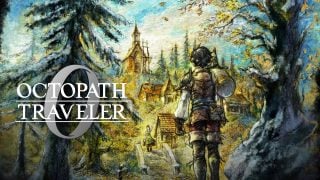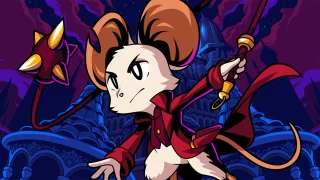Introduction
What do you love about Nintendo? The more I ask myself that question, the more complex my answer gets. I decided to use the term “N factor” to describe my feelings, because while it’s near impossible to define, Nintendo’s best games all have some undeniable and exclusive allure about them. They’re the result of finely tuned ideas and ideals that collectively personify the company behind them.
Since the early 1980s, they have been constantly refining these unparalleled experiences, and yet, this Nintendo magic has also existed from the start. Do you remember the first time you played a Mario game? Whether it was Super Mario Bros. 30 years ago or Super Mario 3D World last week, you must have felt that careful and playful design that Nintendo has all but copyrighted. How about Zelda? Holding the Master Sword for the first time, in any of Link’s adventures, fills you with a euphoria that you won’t find anywhere else in gaming, period.
My point is this: Nintendo makes games that no other developer ever could. But how? It has nothing to do with money, time, or any other resource, and it’s not something that can be reverse engineered in hopes of emulating. So do I have any chance whatsoever of precisely defining this nebulous N factor? Probably not, and part of that is because you could ask a hundred lifelong Nintendo fans to try and you would probably get a hundred different answers. But I do have an idea of how to illustrate what I, personally, love about Nintendo’s games: By using Nintendo games, of course.
I’ve selected an assortment of games that I think perfectly illustrate various elements of Nintendo’s unique personality. Games that exemplify the things I adore most about Nintendo, and those that I think make them peerless in the industry. So come on a sappy (but heartfelt) adventure with me, and I’ll try to explain what makes Nintendo, well… Nintendo.
The N Factor series:
- N Factor, Part 1: Charm
N Factor, Part 2: Respect
Nintendo’s charm
To start this series, I’m going to analyze one of the most commonly used words you’ll hear when people describe Nintendo: charm. Charm, like my entire N factor concept, is a vague way to communicate Nintendo’s lovable appeal. Thankfully, I don’t have to find a way to articulate what Nintendo charm looks like, because I have a game in mind that perfectly illustrates this concept for me. Let’s take a look at what I think is one of the most charming games ever to grace a Nintendo console, Nintendo 64’s Paper Mario.
From the first time you see the title screen, it’s immediately apparent that the adventure that awaits you in Paper Mario is going to be magical. Mario’s escapades in the Mushroom Kingdom have always felt like the stuff of fairy tales, so to present this adventure as an actual storybook, with the characters literally jumping off the pages, felt incredibly natural. Where other developers have struggled to make aesthetic choices like this come across as anything but a gimmick, Nintendo affiliate studio Intelligent Systems effortlessly wove it through every detail of Paper Mario.
Detail is really the key here. To create a world that consumes you, that invites you to get lost in its presentation, its lore, and its story; it really comes down to an intense attention to detail. In Paper Mario this detail appears in its paper dolls, colorfully illustrated on both sides. It’s the way pieces of the environment are held to the backgrounds by tape, or dangle from strings hanging above. This commitment to make every visual element further the game’s captivating style is what sets it apart. Add to this the already vibrantly colored and imaginative world of Mario and his pals, and it’s stylistically in a league of its own.
And what would any Mario game be without its cast? The cool thing about Mario’s world is that not only do you get attached to its heroes, but you find yourself falling in love with its villains and monsters as well. Paper Mario does more for this cause than any other Mario game by using the entire cast of characters in some wonderfully unique ways. Of course Mario, Bowser, and Peach take center diorama, as they always do. But it’s the way Nintendo employs the countless number of supporting characters and baddies that gives this game its amazing charisma. Who’d have thought that Mario would ever swim with a Cheep-Cheep or vanish with a Boo, much less fight alongside them?
Most of these characters are deepened even further by the game’s playful and, honestly, very funny dialogue. Mario himself is relinquished to the role of silent protagonist, but every other character has plenty of talking to do. The core of the writing is always lighthearted and fun. You’ll hear Bowser break the fourth wall with lines like “No more sequels! It’s gonna end right here, right now. ONCE AND FOR ALL.” While the ever-timid Luigi confesses “Everyone runs out of extra lives sometime.” The dialogue in Paper Mario is meant to make you smile, and it will, repeatedly. The trick is that it pulls you through a meaningful and well-told story at the same time.
I would be remiss if I neglected to mention Paper Mario’s music and sound design. The bouncy, playful melodies that are synonymous with Mario certainly play a role in the game’s wonderful ambience. Yuka Tsujiyoko and the legendary Koji Kondo nailed the new yet nostalgic sound of decades of Mario moments in a soundtrack that complements the look and feel of Paper Mario perfectly. And of course, every time Mario bounces on a goomba or goes down a pipe, it sounds just right.
Serving as a spiritual successor to Super Mario RPG: Legend of the Seven Stars, Paper Mario had some very big shoes to fill. Thankfully, instead of just following in its progenitor’s grand footsteps, it decided to create its own image. The elements that worked well in Mario RPG, like the proactive JRPG-style combat, made their way into Paper Mario. Most of its structure, though, was rethought from the ground up and made for an entirely new take on what the Mushroom Kingdom could look like. A perfect balance of reverence and creativity led to one of Nintendo’s crowning achievements, and easily one of the most charming video games ever made.
The N Factor series:
-
N Factor, Part 1: Charm
N Factor, Part 2: Respect
N Factor, Part 3: Agelessness
N Factor, Part 4: Immersion
N Factor, Part 5: Creativity
N Factor, Part 6: Unity
N Factor, Part 7: Polish
N Factor, Part 8: Timelessness
N Factor, Part 9: Fun
N Factor, Part 10: Vision






